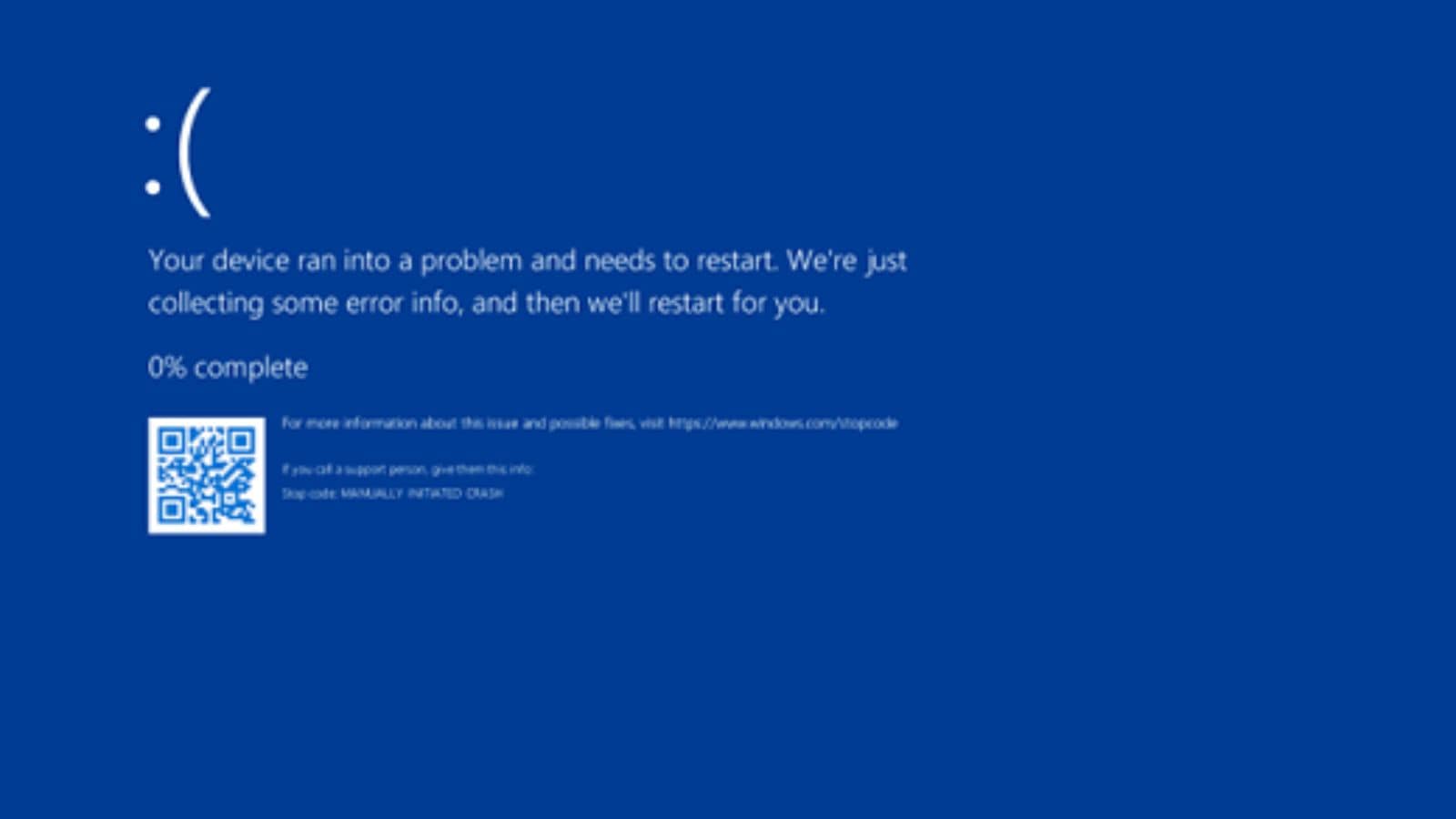Microsoft recently announced that it is scrapping the Blue Screen of Death (BSOD), one of the most iconic Windows error messages of all time. The tech giant said it is replacing the infamous Blue Screen of Death with a new, simplified user interface that “improves readability and aligns better with Windows 11 design principles.”
The Blue Screen of Death, also called BSOD, has been around for almost 40 years and will soon be replaced with a minimal-looking black screen of death with no emoji and QR code. Since Windows 1.0, the infamous Blue Screen of Death has undergone a lot of visual and other changes, but this is the first time in the last couple of decades that the company is bringing a major design to the Windows error page.
 The new Black Screen of Death is bland. (Image Source: Microsoft)
The new Black Screen of Death is bland. (Image Source: Microsoft)
While this may come as a surprise to some, earlier this year, in April, Microsoft had hinted that it was testing a new look for the iconic Blue Screen of Death. The new simplified Black Screen of Death has the error message “Your device ran into a problem and needs to restart”, and looks like the screen you would normally see during a Windows update. The tech giant has also moved the stop code and the name of the system driver that caused the crash to the bottom of the screen.
“This is really an attempt on clarity and providing better information and allowing us and customers to really get to what the core of the issue is so we can fix it faster”, said David Weston, the vice president of enterprise and OS security at Microsoft, in a statement to The Verge.
The new Black Screen of Death will be coming with a Windows update sometime “later this summer”. Part of Microsoft’s Windows Resiliency Initiative, the move comes after last year’s Crowdstrike incident, a security software that caused more than 8 million Windows PCs to crash with the Blue Screen of Death after a buggy software update.
The tech giant is also working on making these unexpected restarts less disruptive with its upcoming quick machine recovery feature, which can help PCs boot after an unsuccessful restart. It will also be available as part of an upcoming Windows update.
© IE Online Media Services Pvt Ltd




Average Rating